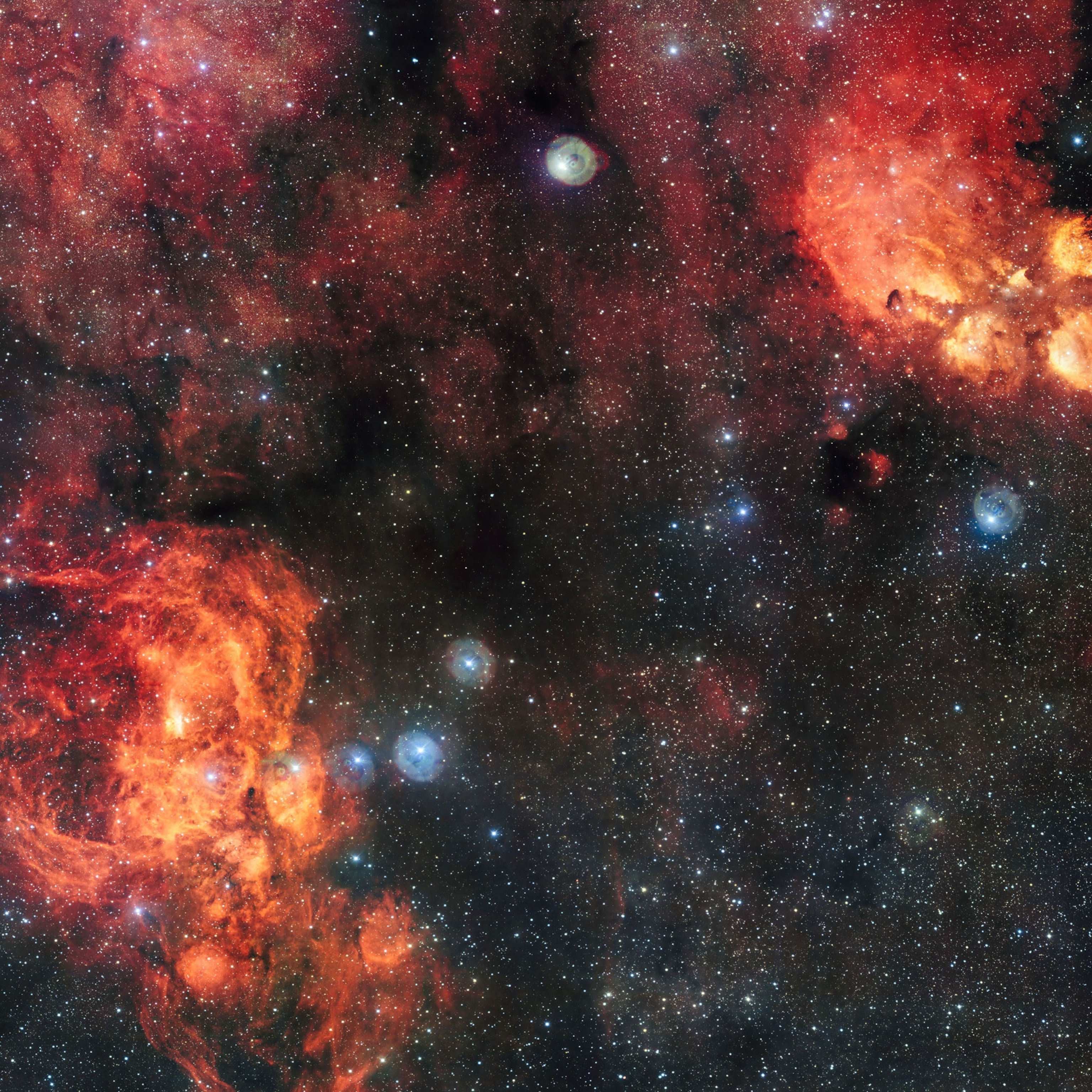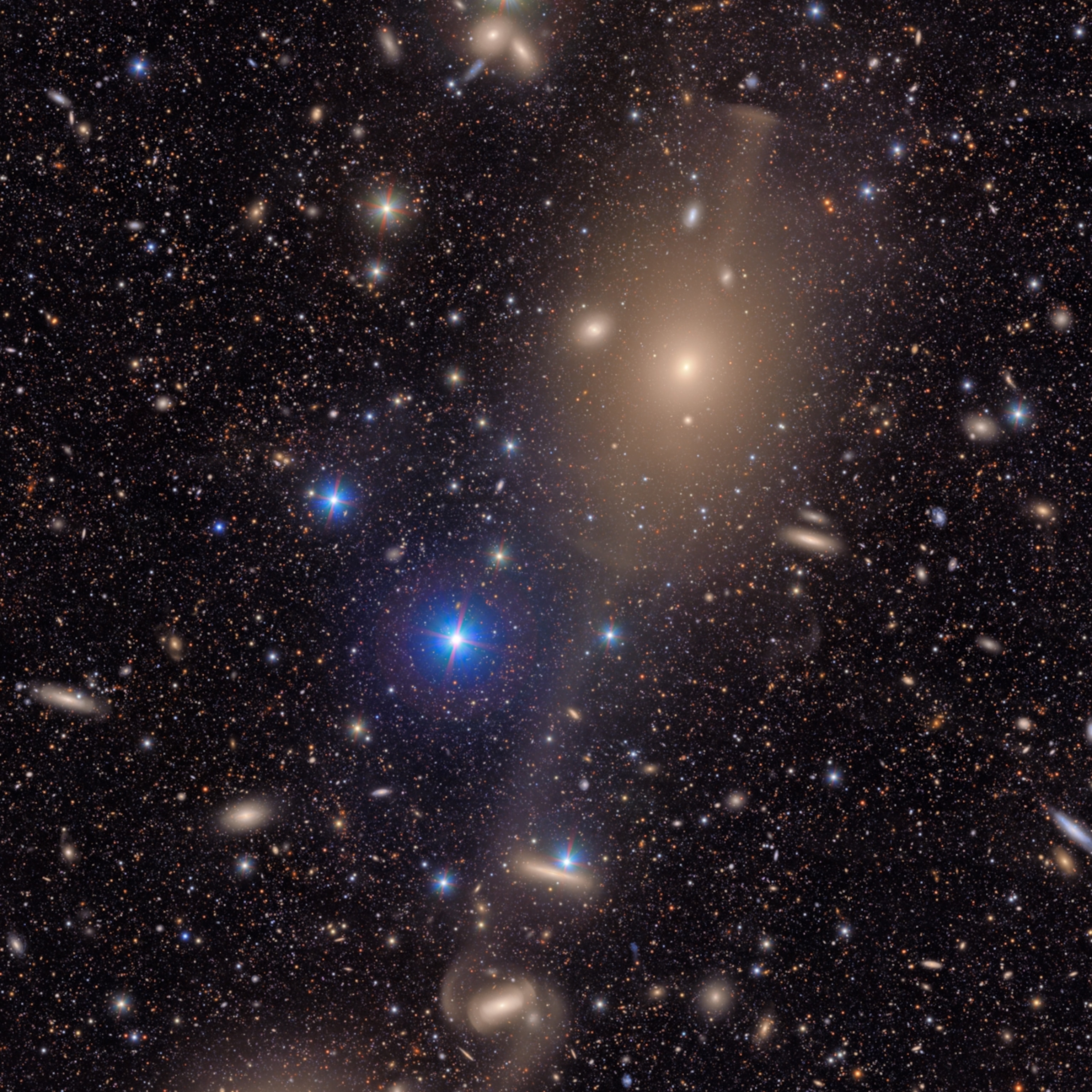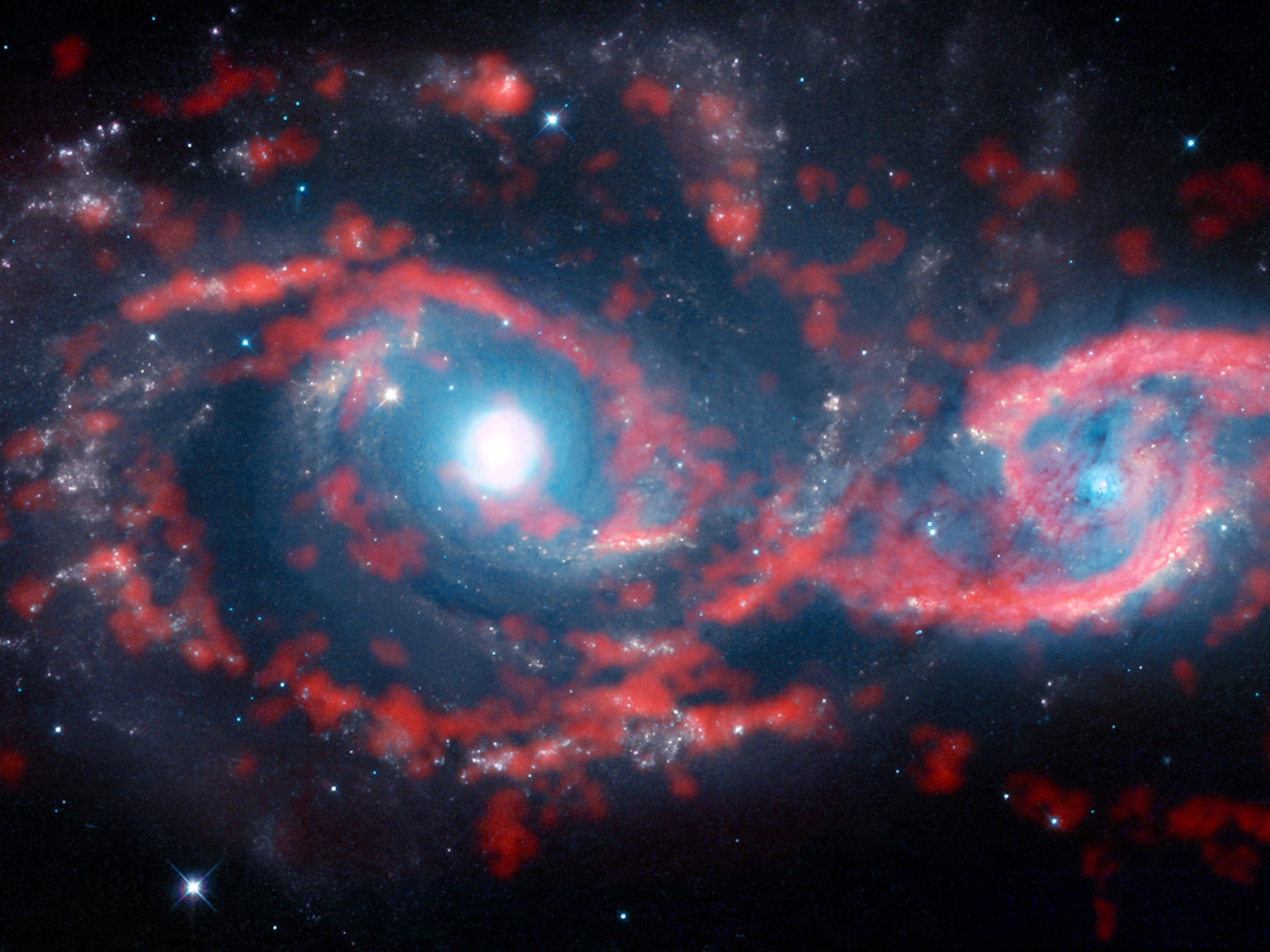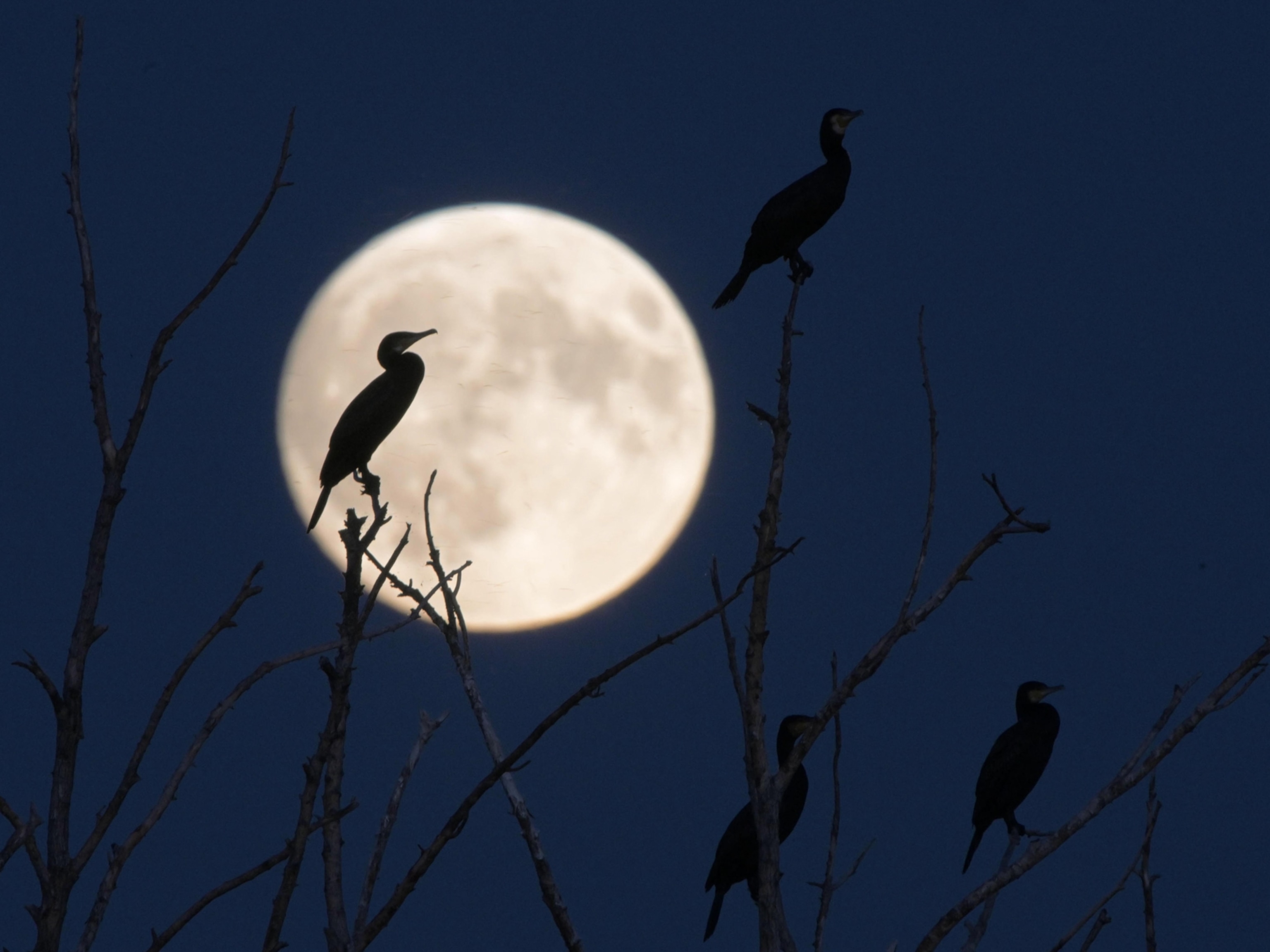
The Giant Squid Nebula and More Animals of the Cosmos
As galaxies collide and new stars are born, spectacular shapes form in the universe—and many of them resemble Earthly creatures.
If you can't get enough of the animals here on Earth, just look toward the heavens. There you will find eagles, elephants, whales, and more—as long as you have a powerful telescope and an even more powerful imagination.
Astronomers have long named galaxies, nebulae, and other astronomical phenomena for the animals they resemble when observed from Earth. Now these animal look-alikes, comprised of stars and stardust, number in the dozens. Nebulae alone, for example, represent at least 20 animals, from giant squid to "running" chickens.
"These are the objects that really capture people’s imaginations," says Karen Masters, associate professor of astronomy at Haverford College. "It’s human nature to see familiar things in the unfamiliar." (See an epic picture that shows thousands of galaxies in one frame.)
And to early observers, these phenomena were indeed unfamiliar. Nebulae are cosmic clouds of gas and dust, linked to the birth or death of stars, whereas galaxies are ensembles of millions or billions of stars bound together by gravity.
Animal names, like Mice Galaxies, have been used for years—and in some cases, centuries. But they’re not actually official, says Thierry Montmerle, former General Secretary of the International Astronomical Union (IAU), which oversees the naming of astronomical objects.

"It’s very informal," he says. "The name is adopted by popular demand, and the IAU is perfectly happy with that."
Mammals
Mammals aren't just popular on Earth—the heavens are littered with them. Indeed, at least three galaxies and six nebulae are named after warm-blooded vertebrates, including the Horsehead, Cat’s Paw, and recently named Manatee Nebulae.
Two of the mammalian galaxy systems, the Mice and the Porpoise, take particularly unusual shapes; they’ve been caught by the gravitational pull of other galaxies, which produces what astronomers call “tidal tails”—or tails literally made of stars.
“It looks like mice because you have these two blobs and both have long tidal tails stretching behind them,” Masters says.

The Whale Galaxy, on the other hand, is a more typical spiral galaxy with arms of stars that spiral out from a central point, often resembling a whirlpool. But from Earth, this galaxy is seen on its edge, rendering in the minds of some astronomers as a whale swimming through space.
Reptiles and Amphibians
Like the Mice and Porpoise Galaxies, the Tadpole Galaxy owes its form to a galactic collision that likely occurred more than a hundred million years ago. The tadpole’s tail is epic in proportion, measuring 280 thousand light-years long—about three times the diameter of our own Milky Way.

But like its earthly namesake, it will be shed as the galaxy evolves. (Read 10 weird things you may not have known about the Milky Way.)
“These tales are not inert—they will live a life of their own,” Montmerle says. “They’ll probably rearrange and give rise to small galaxies.”
And don’t forget about reptiles. There are flying lizards in space, too.
Birds
There may be no galaxies named after birds, but there are certainly plenty of avian nebulae to speak of—both wild and domesticated.
The most well-known of them, the Eagle Nebula, gets its name from a dark impression in the center, forming the alleged shape of a bird in flight.
Since the nebula’s discovery more than two centuries ago, astronomers ave found other evidence to reinforce its place in the animal kingdom: Newborn stars are emerging within the Eagle Nebula from what they call "evaporating gaseous globules"—or the aptly named EGGS. (Take a 3-D tour through a cloud of baby stars.)
Then, of course, there’s the Running Chicken Nebula, which glows an ultraviolet red about 6,500 light-years from Earth (though if you have trouble visualizing the shape, no one will blame you).
Other nebulae have also been named after birds, including the Seagull, Pelican, and Owl nebulae.
Insects, Arachnids, and Crustaceans
For the critterphobic, a walk through the cosmos would be unnerving: pinching, stinging, and biting creatures abound. There are nebulae named after tarantulas and red spiders, ants and butterflies, and lobsters and prawns. And yet another pair of colliding galaxies take the form of an insect’s antennae.

But in the celestial world of arthropods, none are more famous than the Crab Nebula, first observed by an amateur British astronomer in the 18th century.
At the time, there was no NASA and certainly no Hubble Space Telescope.
But the Crab Nebula, produced by an exploding star, was incredibly bright and visible even through low-powered binoculars. A century later, another astronomer William Parsons drew a sketch of it featuring myriad tendrils that looked like the legs of a crab—at least to him. Today you'd be hard-pressed to find an astronomer who agrees. (See a new Hubble picture that shows a first peek inside the Crab Nebula.)

"When you look at these objects with telescopes today, they don’t really look like what they were named after," says Ray Villard, news director at the Space Telescope Science Institute.
"The Crab Nebula is an explosion—I call it roadkill—but when it was first observed they thought it looked like a crab."
Fish, Squid, and Jellyfish
The Porpoise and Whale Galaxies should be wary, as predators in the galactic ocean lurk nearby—err, within a few million light-years.
The Shark Nebula is one of them. Shaped by its birth star's high-energy light and interstellar winds, the nebula rests about 650 light-years away from Earth.
But it’s certainly not the most famous galactic fish. That’s the Stingray Nebula, considered the youngest planetary nebula—a title given to nebulae born of a dying star—which became visible late last century. (Read about the remnants of one of the universe's oldest stars.)
Indeed, just 25 years ago, gases surrounding the withering star weren’t hot enough to glow, but now the stingray-shaped nebula emits red, green, and blue gases.
The Jellyfish, Giant Squid and Fishhead Nebulae also swim through this ever-expanding cosmic sea.
Closed Ecosystem
Today, astronomers continue to discover a mind-boggling number of nebulae and galaxies. Yet according to Villard, it's unlikely that new animals will be entering the heavens anytime soon.
"The ones that are big enough and close enough to show detail have already been discovered and already have nicknames," he says.
"Anything [newly] discovered is so faint and far away that it doesn’t deserve a name."
And so unless there's a nearby galaxy or nebula yet to be discovered with wings, fins, or antennae, these animals will remain the only truly cosmic creatures.







